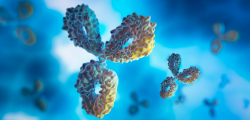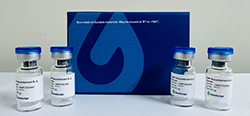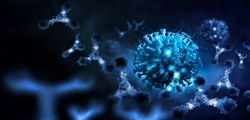| Species |
Human |
| Protein Construction |
| His |
APOE3/Apolipoprotein E (Lys19-His317)
Accession # P02649-1 |
| N-term |
C-term |
|
| Conjugate |
Biotin |
| Purity |
> 95% as determined by Bis-Tris PAGE |
| Endotoxin Level |
Less than 1EU per μg by the LAL method. |
| Biological Activity |
Human TREM2, hFc Tag captured on CM5 Chip via Protein A can bind APOE3/Apolipoprotein E[Biotin], His, Human in SPR assay (Biacore T200). Test result was comparable to standard batch. |
| Expression System |
HEK293 |
| Theoretical Molecular Weight |
35.3 kDa |
| Apparent Molecular Weight |
Due to glycosylation, the protein migrates to 35-45 kDa based on Bis-Tris PAGE result. |
| Formulation |
Lyophilized from 0.22μm filtered solution in PBS (pH 7.4). |
| Reconstitution |
Centrifuge the tube before opening. Reconstituting to a concentration more than 100 μg/ml is recommended. Dissolve the lyophilized protein in distilled water. |
| Storage & Stability |
Upon receiving, the product remains stable up to 6 months at -20 °C or below. Upon reconstitution, the product should be stable for 3 months at -80 °C. Avoid repeated freeze-thaw cycles. |
| Target Background |
Apolipoprotein E (apoE) is a lipid carrier in both the peripheral and the central nervous systems. Lipid-loaded apoE lipoprotein particles bind to several cell surface receptors to support membrane homeostasis and injury repair in the brain. Considering prevalence and relative risk magnitude, the ε4 allele of the APOE gene is the strongest genetic risk factor for late-onset Alzheimer's disease (AD). |
| Synonyms |
Apolipoprotein E; Apo-E; APOE; apolipo E; APOE3 |
For research use only. Not intended for human or animal clinical trials, therapeutic or diagnostic use.




































